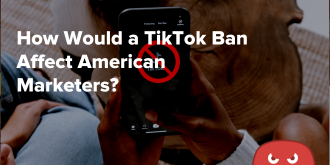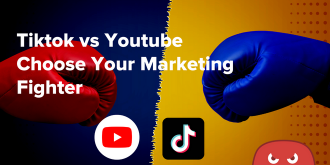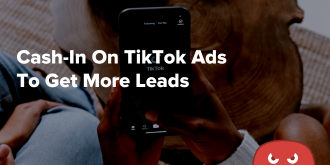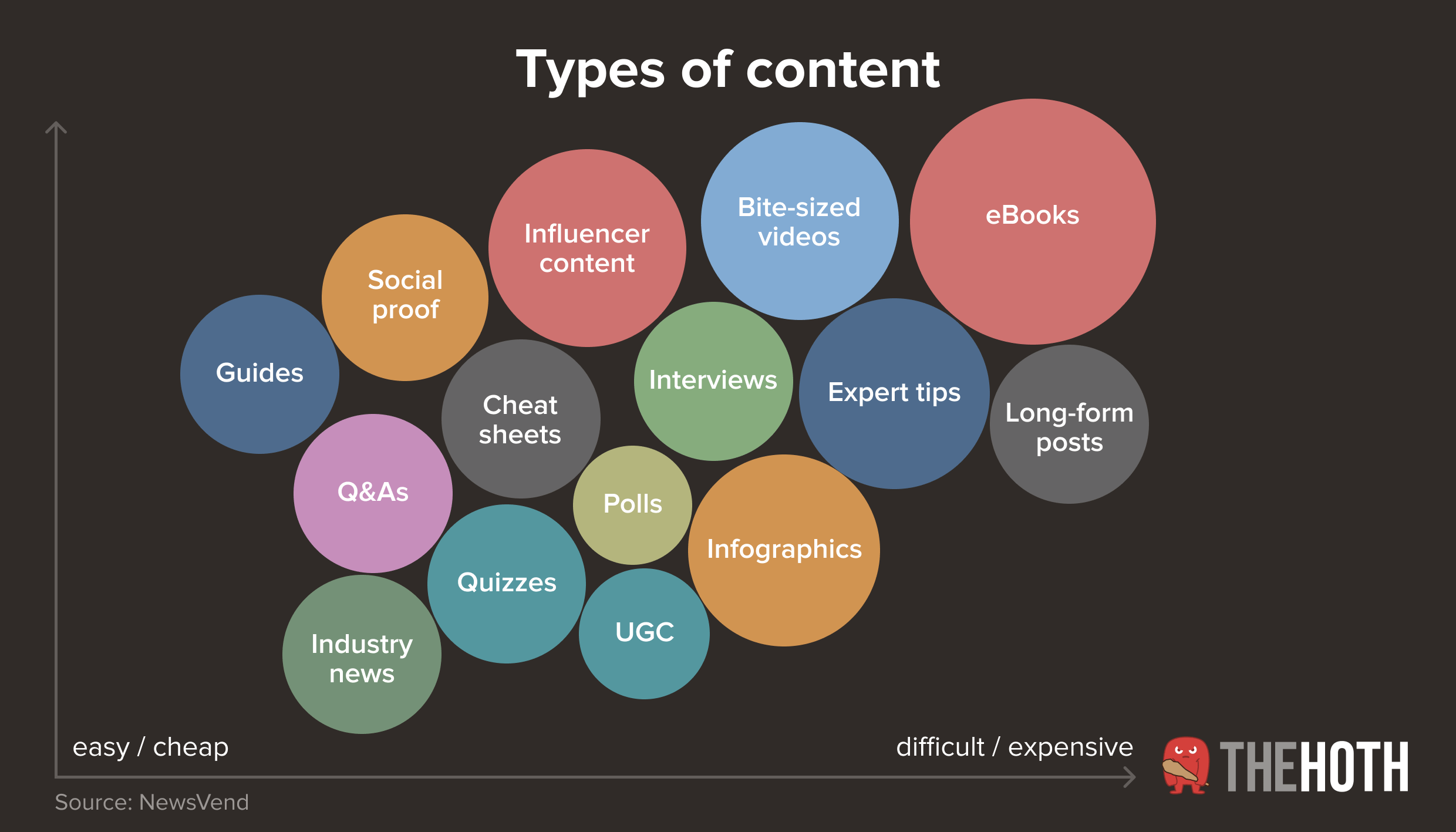Quick Links
You know how it goes. You create a new social media business account and start working on your presence. At first, you’re pumped up and eager to get your first followers and leads. But weeks go by, and frustration starts to kick in.
Your target audience seems to be unaware of your business. Engagement rates are suspiciously low, and your follower count is stagnant. You may even feel like you can’t avoid simply repeating yourself. Finally, you lose motivation and conclude that social media marketing doesn’t work for your niche.
The moral of the story is inspiration alone only gets you so far.
Real content creation begins when you streamline your work processes and take the guesswork out of the equation. You need a sustainable content strategy and a holistic approach to keep hitting your key performance indicators (KPIs) month after month.
By getting better at social media content creation, you’ll also get better at communicating with your audience and understanding their pain points.
Let’s unpack this.
Social Media Content Creation — What Is It Exactly?
There’s a subtle difference between preparing and creating content for social media. Many businesses simply try to retrofit the content of their website into their social media channels and, unsurprisingly, struggle to do so.
Social media content creation means crafting brand-new content and repurposing existing assets for each social media channel.
It is a lot of work, but your efforts will pay off — 83% of Instagram users say that the social media platform helps them discover new products or services, and yours can be among them.
The process of creating content, especially for social media, includes:
- Monitoring competitors’ activity and their content strategy.
- Spotting industry trends.
- Analyzing customer needs and their pain points.
- Developing and maintaining a recognizable tone of voice and visual style.
- Finding the right type of content for every stage of the funnel.
- Sticking to an optimal posting schedule.
Not to worry: you can simplify or even fully automate some of these processes — we’ll tackle this topic in the following sections.
Why social media content creation has never been more important
Being salesy on social media is so 2012.
Consider this. Most consumers mainly use the internet to find information, stay in touch with friends and family, or consume entertaining content.
Instead of forcing their audience to consider purchasing from them right away, business owners use social media to go the extra mile by engaging in a two-way conversation with them.
And rightfully so. Over half the consumers said they’re more likely to trust brands that produce relevant and engaging content.
But there’s more to it.
Creating quality content for social media content also helps you:
- Spread the word about your business.
- Cement your brand’s authority.
- Grow your audience.
- Build a community around your brand.
- Get high-quality traffic.
- Encourage engagement.
- Share your brand values.
- Boost brand advocacy.
- Attract and hire new talent.
How to become a social media creator for your own business
Why spend time and hard-earned money on freelancers every time you need a short talking-head video or a simple infographic?
No one knows your product or service better than you. That’s why it makes sense to invest in your own content-creating skills.
You can begin with hands-on Skillshare or Domestika courses on strategizing and photo editing for Instagram or mastering TikTok, depending on where your target audience is. Nail the basics.
Then, start building your social media content creator setup.
Purchase the necessary editing tools, apps, filters, presets, a good mic, and a ring light — and you’re good to go. Don’t get carried away with the gear. As your social media presence grows, so will your toolkit.
Social media content creation tools to have at your fingertips
These are the main social media content creation tools you’ll need:
- Social listening tools: Discover new brand mentions and gently spy on your competitors to see the gaps in their content strategy and get ahead of them. Check out Brand24, BrandMentions, and Mention.
- Scheduling tools: Plan and auto-publish your content to make sure it goes live exactly when your target audience is the most active. Check out Buffer, Later, and Planoly.
- Editing tools: Give your content a professional look and feel in a few clicks by using template-based mobile editing apps. Check out Canva, Splice, and Unfold.
- Link-in-bio tools: Present your products or services using a lightweight landing page created specifically for social media. Check out Linktree, Linkin.bio, and Tap Bio.
10+ Types of Social Media Content to Focus on in 2022
Don’t despair over poorly performing static photos — we’ve gathered top trending content ideas and formats you can start implementing immediately.
- Stories: Use more informal time-sensitive content to show what your brand lives and breathes.
- Interactive content: Try Q&A sessions, polls, surveys, contests, quizzes, challenges, and infographics.
- Educational content: Demystify industry secrets and complex niche topics with the help of digestible explainers, how-tos, and tutorials.
- Behind-the-scenes content: Give your audience a sneak peek of your work process.
- Customer success stories: Share real stories of how your product or service has made someone’s life easier.
- User-generated content: Showcase authentic endorsements beaming with brand love.
- Reels: Show your products or services in action to give a perspective of who you are and what your business is about
- Live videos: Prove your credibility and make your brand more approachable by regularly going live.
- Downloadable assets: Capture leads on social media by sending them a download link in exchange for their email address.
- Interviews with niche experts and opinion leaders: Publish them as podcasts, YouTube videos, or Instagram videos to boost your brand authority.
- Long-form content: Feature in-depth articles and guides on your social media and incentivize your followers to visit your website blog.
Try HOTH Blogger to get professionally-written long-form content for your blog.
How to Build a Sustainable Social Media Content Strategy
A sustainable social media strategy is one that you can maintain for a long time. To achieve that, let’s forget about ever-changing trends and algorithms for a minute and focus on the essentials instead.
The following steps will help you improve your existing social media content strategy or create a new one from scratch.
1. Define your target audience and their needs
Think big, start small. Create a customer avatar by describing your typical follower or customer.
Specify these characteristics:
- Age group
- Lifestyle
- Pain points
- Needs and goals
- Values
- Concerns and challenges
- Employment status
- Tastes and hobbies
Feel free to adjust this list as needed. If you are, for example, a tax lawyer, you may want to target those who identify themselves as entrepreneurs or self-employed. On the other hand, this information won’t play any role for a bakery owner who’s just trying to attract pretty much anyone from their neighborhood.
2. Perform a competitor analysis
Use social listening tools to find your direct competitors on social media. It’ll help you discover new opportunities and learn a thing or two from them.
Pay attention to their:
- Tone of voice
- Preferred channels and content formats
- Promotion strategy
- Audience engagement
- Targeted topics
- Brand advocates
Discover your competitors’ strengths and weaknesses and use that knowledge to distinguish your own brand from them.
3. Find the right channels for your business
The answer to which channel you should use will likely derive from the customer avatar that you’ve created two steps earlier. Based on your target audience’s portrait, you can easily pinpoint the social networks they use the most.
Nevertheless, you can’t go wrong with YouTube. There’s a reason it’s the second-most preferred video channel among social media marketers, with 69% using it, a single percent below Instagram at 70%.
This also shows how Instagram is rapidly turning into a video-first platform, when 70% of social media marketers are already experimenting with short videos on the platform — often in the form of Instagram Stories. You can repurpose videos from YouTube and publish them on Instagram or vice versa.
4. Create an evergreen content plan
Make a comprehensive list including all types of social media content your brand could potentially use, from educational carousels to live videos. Then, organize them based on their efficiency and how difficult they are to produce.
You can also add another dimension by specifying which stage of the funnel they cover.
Here’s an example.
- Awareness stage content: Hacks, tips, ideas, explainers, and infographics.
- Consideration stage content: Product reviews, comparisons, UGC, templates, FAQs, tutorials, and eBooks.
- Decision stage content: Customer success stories, Q&A sessions, and walkthroughs.
If you invest a bit of time in creating a similar timeless content plan for your niche, you’ll never run out of ideas on what to post on social media.
5. Schedule your content in advance
Scheduling is the only way to make sure your posts go live at optimal times and that your account stays on your audience’s radar. A content planner should become your best friend or, at least, a helping hand.
When you plan your content ahead of time, you get a chance to double-check every little detail, from adding a relevant location to tagging the right accounts.
Scheduling also allows you to plan your social media feed visually, which is especially important for visual-first social media platforms such as Instagram.
6. Promote your content
“Publish and pray” isn’t a viable strategy for social media — informative but underpromoted posts can get left in the dust.
Every time you share a valuable piece of content, give it an initial boost to make sure it gets noticed before being buried under the newer posts.
There’s more than one way to do it:
- Start a paid campaign.
- Get your content featured on larger niche accounts.
- Collaborate with niche experts and co-promote each other.
- Work with niche influencers.
- Crosspost your content pieces if the format allows it.
- Get your teammates involved.
- Tag every expert or source you are mentioning in your posts.
- Ask your audience questions to spark engagement.
- Add your social media feed to your website.
7. Measure, analyze, and improve
Start tracking your social media performance from day one. It’s crucial for understanding whether you are reaching the right audience and boosting the right type of content.
Major social media platforms have built-in analytics tools, but they may not be intuitive or convenient enough. If that’s your case, try the aforementioned content scheduling tools.
Many of them allow you to pull data from different platforms and analyze it in one place. They’ll automatically determine the best time to post and the best posting frequency for your accounts. They can also generate personalized recommendations to help you expand your reach and drive engagement.
Debunking Myths About Content Creation for Social Media
There are a lot of misconceptions swirling around the topic of social media content. Let’s unwrap some of them.
Myth 1. Hashtags are dead and gone
What they say is true. Overstuffing captions with high-competition hashtags doesn’t work — your social media posts will attract bots and get drowned out by other publications in a matter of seconds. Also, cluttered captions and comments just look messy.
But hashtags are still vital for Instagram, Twitter, and TikTok, especially when it comes to sharing a trend, starting a challenge, or inviting social media users to take part in a competition. The secret is to stay away from overused hashtags and use medium- and low-competition or custom tags instead — tags that are 100% relevant to what you’re posting about.
Myth 2. You must always stick to a rigid posting schedule
A fixed content plan is extremely helpful for maintaining consistency. But, in times of turmoil, it may come back to bite you.
Here’s a cautionary tale for all businesses on social media.
The wave of BLM protests in 2020 encouraged major brands on Instagram and other platforms to take a stand in support of racial equality. But some US-based big businesses kept posting regular stuff and reacted to the events in a generic way or didn’t weigh in at all.
For many Instagram users, it looked like those brands were just trying to wait out that period. Unsurprisingly, they ended up being criticized for turning a blind eye to social issues.
The key takeaway here is to allow your brand to react to global events and trends instantly and never prioritize content over your own audience. It will only strengthen your customer bonds.
Myth 3. Influencer content always beats UGC
Sponsored content, effective as it is, can’t compete with user-generated content (UGC) when it comes to authenticity.
Influencer fatigue is real.
As every influencer post turns into a brand endorsement, social media users start looking for more authentic, down-to-earth creators, activists, and needle-movers.
UGC has an important advantage — it’s more relatable. And don’t worry if you have a small audience, If anything, a small number of followers practically guarantees the unbiased nature of the content.
But how do you maintain authenticity while also reaching out to a new audience?
Here’s a solution.
When looking for sponsored content opportunities, search for niche influencers to attract and retain a genuinely interested audience. Instead of choosing a big name, reach out to a local industry expert with around 15K dedicated and engaged subscribers.
Social Media Content Creation Made Easy
We get it — creating professional-looking content, especially video content, is easier said than done. Whether you and your team are camera-shy or editing a video in Adobe Premiere feels like rocket science to you, we’ve got you covered. Give us a call, we’re here to help.
















very detail oriented blog for me because I am new in social Media Field.
very detailed article